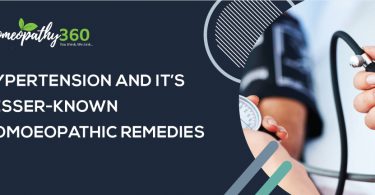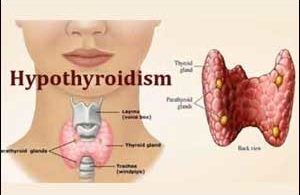
Abstract: Puberty is often described as a period of storm and stress, and when there is late onset it becomes a serious problem, sometimes a person may experience teasing at school. But the proper constitutional homoeopathic remedy will enhance and help maintain the physical and mental health. The most important criteria in determining the constitutional treatment are the individual symptoms.
Keywords : Puberty, endocrinology, gonadotropins, gonadostat, hypothalmopituitary, oestrogen
hypogonadotropic hypogonadism, hypergonadotropic hypogonadism.
Abbreviations : GnRH : gonadotropin releasing hormone , FSH : follicular stimulating hormone,
LH : luteinizing hormone.
Introduction :
Puberty is the period, which links childhood to adulthood. It is the period of gradual development of secondary sexual characters. There are profound biological, morphological and psychological changes that lead to full sexual maturity and eventually fertility.
Morphological changes during this period are breast budding, pubic and axillary hair growth, growth in height and menstruation. Most of the changes occur gradually but only the menarche can be dated. Moreover there is lot of variation in the timing of events. All these changes are usually completed between the age of 10 and 16 years.
In boys, pubertal changes begin at between 10 and 14 years and are complete at between 15 and 17 years. The genitalia develop, testes enlarge and the area of pubic hair increases. Peak height velocity is reduced between ages 12 and 17 years during stage 4 of testicular development. Full spermatogenesis occurs comparatively late.(1,2)
When delay is great and problems are serious, for example, teasing at school, treatment and a specialist assessment becomes necessary.
Important controlling factors for the onset of puberty are genetic, nutrition, body weight, psychological state, social and cultural background, exposure to light and others .( 1)
ENDOCRINOLOGY IN PUBERTY
The levels of gonadal steroids and gonadotropins are low until the age of 6-8 years. This is mainly due to the negative feedback effect of oestrogen to the hypothalamic pituitary system (Gonadostat). The gonadostat remains very sensitive (6-15 times) to the negative feedback effect, even though the level of estradiol is very low (10 pg/mL) during that time. As puberty approaches this negative feedback effect is gradually lost. This results in some significant changes in the endocrine function of the girl.(1)
Hypothalmopituitary gonadal axis
The GnRH pulses from hypothalamus results in pulsatile gonadotropin secretion.
GnRH → FSH, LH → Estradiol.
Thyroid gland plays an active role in the hypothalmopituitary gonadal axis.
Adrenal glands increase their activity of sex steroid synthesis from about 7 years of age. Increased sebum formation, pubic and axillary hair and change in the voice are primarily due to adrenal androgen production.
Gonadal oestrogen is responsible for the development of uterus, vagina, vulva and also the breasts.
Leptin, a peptide, secreted in the adipose tissue is also involved in pubertal changes and menarche.(1)
DELAYED PUBERTY
Puberty is said to be delayed when the breast tissue and /or pubic hair have not appeared by 13-14 years, or menarche appears as late as 16 years. The normal upper age limit of menarche is 15 years.
Causes of Delayed puberty :-
Hypogonadotropic hypogonadism
- Constitutional delay
- Chronic illness and malnutrition
- Primary hypothyroidism
- Isolated gonadotropin deficiency ( Kallmann’s syndrome)
- Intracranial lesions – tumors like craniopharyngioma, pituitary adenomas
Hypergonadotropic hypogonadism
- Gonadal dysgenesis, 45 XO
- Pure gonadal dysgenesis 46 XX, 46 XY
- Ovarian failure 46 XX
Eugonadism
- Anatomical causes
- Mullerian agenesis
- Imperforate hymen
- Transverse vaginal septum
- Androgen insensitivity syndrome (1)
Homoeopathic management
Murphy’s Repertory
Chapter : Female
MENSES, general
menarche, delayed – acon., agn., alet., am-c., ant-c., apis., aur., aur-s., bar-c., bry., dam., calc., calc-p., calc-s., carb-s., cast., caul., CAUST., chel., cic., cimic., cocc., con., croc., cupr., dig., dros., dulc., ferr., GRAPH., guai., ham., helon., hyos., KALI-C., kali-p., kali-per., lac-d., lach., lyc., mag-c., mag-m., mang., merc., NAT-M., petr., phos., polyg., PULS., sabad., sabin., sang., sars., SENEC., SEP., sil., spig., staph., stram., stront-c., sulph., tub., valer., verat., vib., zinc.
Feels disturbed, if slightly – fl-ac.
Breasts, with undeveloped – lyc.
Milk, from drinking too much- lac-d(3)
Chapter : Constitutions and children
GIRLS, general
disposition, mild, when puberty is delayed, or menstrual function is defectively or irregularly performed- puls.(3)
Chapter : Children
DEVELOPMENT, delayed or arrested – aeth., agar., bac., BAR-C., bor., calc., CALC-P., CARC., caust., chin., cupr., des-ac., iod., kali-c., kreos., lac-d., med., nat-m., nep., ph-ac., phos., pin-s., sil., sulfa., sulph., thyr., vip.
bones, of – calc., calc-f., calc-p., sil.
glands- bar-c., iod.
muscles, of – nat-m
nutritional disturbances due to – bac., bar-c., calc., calc-p., caust., kreos., lac-d., med., nat-m., pin-s., sil., thyr.(3)
PUBERTY, ailments in – acon., agar., ant-c., apoc., aur., bell., calc., cal-p., caust., cimic., croc., cupr., ferr., ferr-p., GELS., graph., guai., hell., helon., ign., iod., jug-r., kali-br., kali-c., kali-p., lach., mag-p., mill., NAT-M., ph-ac., phos., plat., PULS., senec., SEP., sil., stram., ther., verat.,viol-o.
boys, in- calc-p, ign., nat-m., puls., sep.
chlorosis, with longing for indigestible substances – alum.
retarded – ferr.
girls in – aur., bar-c., bell., calc-p., ferr., fil., ign., LACH., nat-m., phos., PULS., SEP.
unduly delayed in, of mild disposition – puls.(3)
Kent’s Repertory
GENITALIA- FEMALE
MENSES, delayed in girls, first menses : Acon., agn., alet., am-c., apis., aur., bar-c., bry., calc., calc-p., calc-s., carb-s., cast., caul., Caust., chel., cic., cimic., cocc., con., croc., cupr., dig., dros., dulc., ferr., Graph., guaj., ham., helon., hyos., Kali-c., kali-p., lach., lyc., mag-c., mag-m., mang., merc., Nat-m., petr., phos., Puls., sabad., sabin., sars., Senec., sep., sil., spig., staph., stram., stront., sulph., tub., valer., verat., zinc.(4)
Conclusion
Homoeopathy treats the person as a whole and it focuses on the patient as a person, as well as his pathological condition. The homoeopathic medicines are selected after a full individualizing examination and after a proper case analysis, which includes the medical history of a pt., family history, physical and mental constitution etc. The above listed medicine may not be directly related to the disease condition because in homoeopathy general symptoms and constitutional indications are also taken into consideration. Constitutional assessment is a prerequisite of effective homoeopathic treatment. The most important criteria in determining the constitutional treatment are the individual symptoms. Constitutional homoeopathic remedies are prescribed for the genetic vitality of the person. They are often given to the children while they are developing and to the weak and elderly. Constitutional remedies fortify people through times of stress or help one to recover from infectious or debilitating diseases. The constitution is the genetic makeup of the vitality, body and tissues. It is also the temperament, emotional disposition and personality of a person. This state involves the inherited weaknesses with which a person is born. (5)
The proper constitutional remedy will enhance and help maintain the general health.
References
- D C DUTTA’S, TEXTBOOK OF GYNECOLOGY, Enlarged & Revised Reprint of Sixth Edition , JAYPEE BROTHERS MEDICAL PUBLISHERS (P) LTD, New Delhi.,2013, Pg. No. 49,54.
- Kumar & Clark, Clinical MEDICINE, By Parveen kumar and Michael Clark, 5th Edition, Elsevier Science Limited , 2002, Pg. No. 1017
- Robin Murphy., Homoeopathic Medical Repertory, 2nd revised edition, New Delhi, B Jain Publishers (P) Limited; 2004 Pg. No. 669,314,285,283,289.
- Kent J.T. , REPERTORY of the HOMOEOPATHIC MATERIA MEDICA and a WORD INDEX, Reprint Edition, B Jain Publishers (P) Limited; New Delhi, 2002, Pg No. 726
- Robin Murphy., LOTUS MATERIA MEDICA, 2nd revised edition, New Delhi, B Jain Publishers (P) Limited; 2004 Pg. No. XV
About the author
Dr Shweta Patel, BHMS MD ( Organon of Medicine ),
Professor- Department of Homoeopathic Pharmacy,
Jawaharlal Nehru Homoeopathic Medical College, Limda. PARUL UNIVERSITY.





